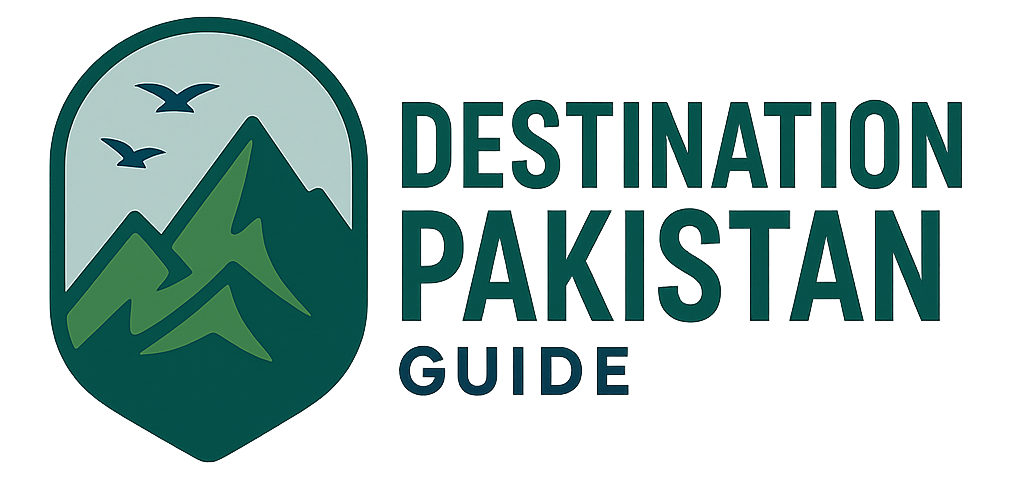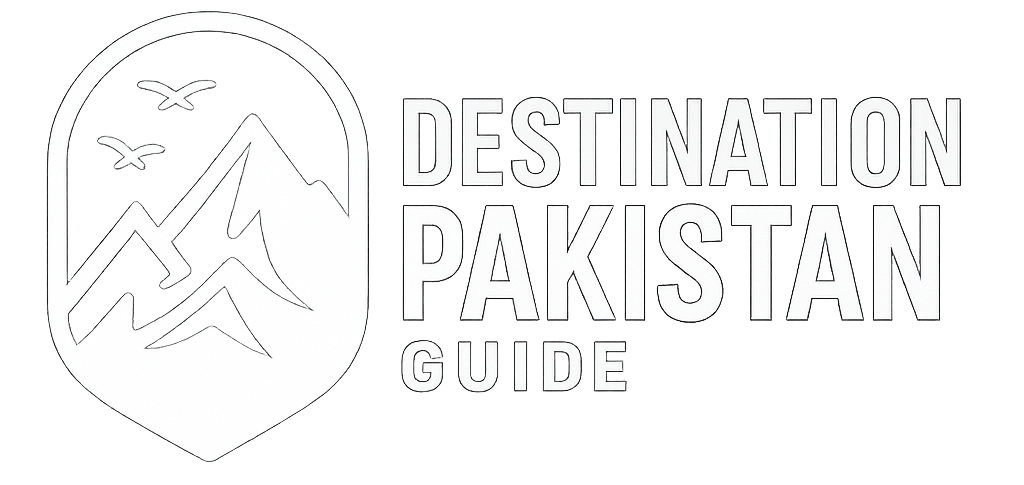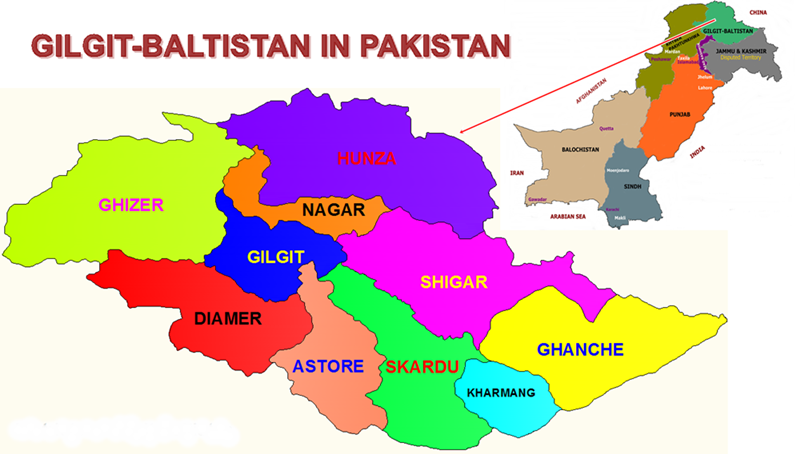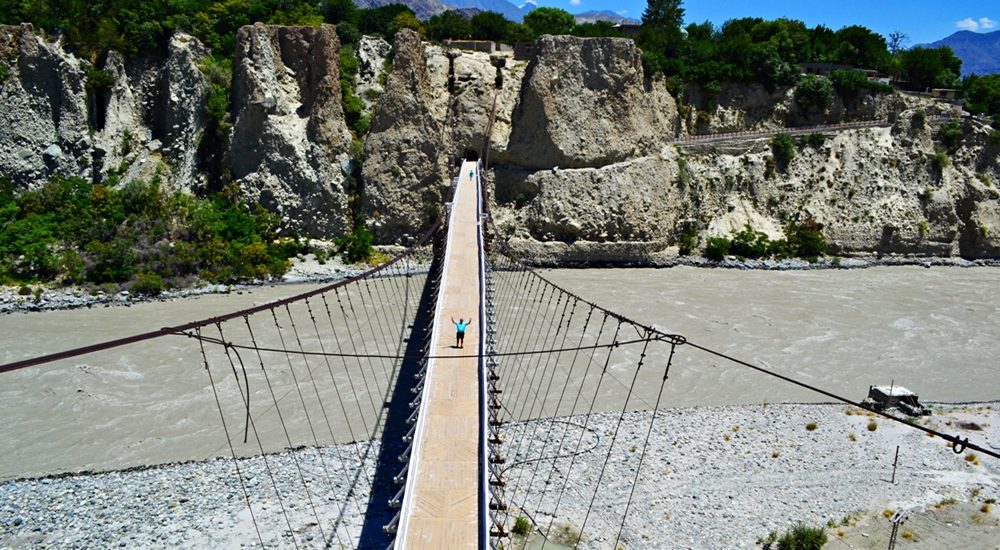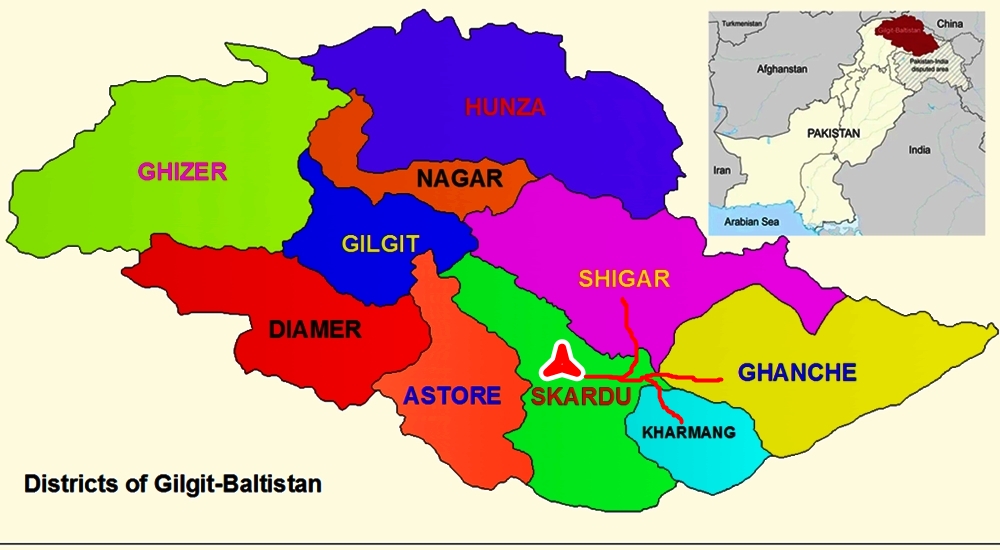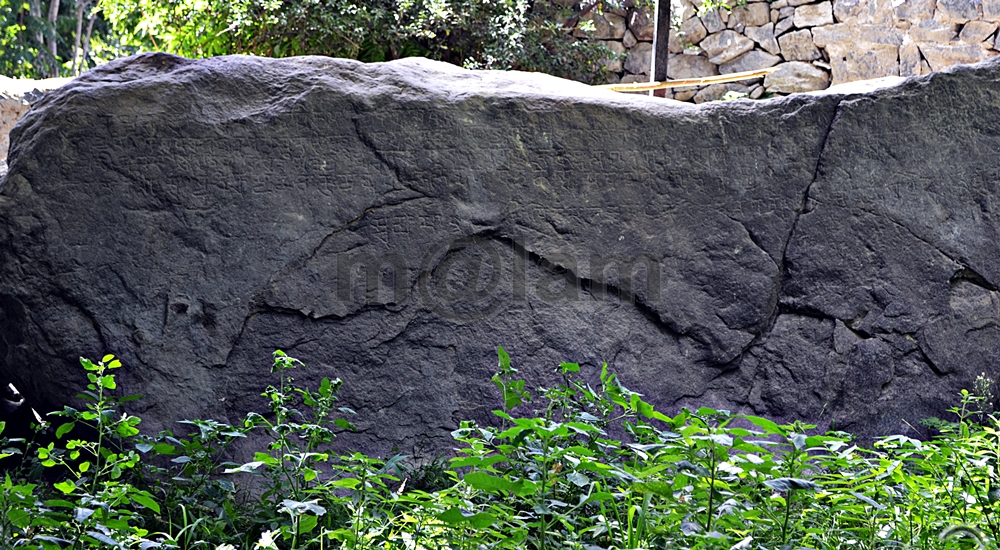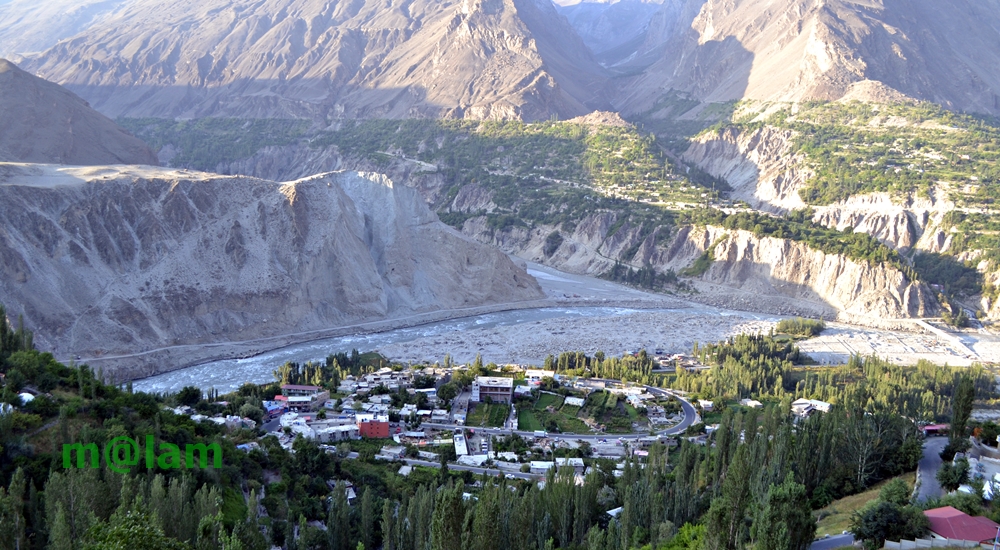Gilgit-Baltistan: Nature’s Paradise and Cultural Diversity

Gilgit-Baltistan, nestled in the northernmost reaches of the world, boasts some of the planet’s loftiest peaks and most extensive glaciers outside the Polar Regions. In addition to its awe-inspiring natural beauty and impressive man-made landmarks, this region is home to over 1.7 million people making a rich tapestry of ethnic groups, each proudly preserving its own culture and language. It has earned worldwide recognition as a top tourist destination and was historically referred to as the Northern Areas of Pakistan.
Geographical Wonders
Gilgit-Baltistan spans an impressive 72,971 square kilometers (28,174 square miles) and is bordered by China’s Xinjiang province to the east and northeast, Afghanistan’s Wakhan Corridor to the north, Pakistan’s Khyber Pakhtunkhwa province to the west, and the Indian-administered state of Jammu & Kashmir to the south.
Geologically, this region is marked by instability, as it serves as the convergence point of the Indian and Eurasian tectonic plates. The Indian plate’s northward movement at an average rate of 7mm per year has given rise to the majestic Nanga Parbat.
Divisions & Districts
Gilgit-Baltistan consists of three primary divisions: Gilgit, Baltistan, and Diamer. These divisions further house ten distinct districts. Gilgit division comprises Gilgit, Hunza, Nagar, and Ghizer; the Diamer division encompasses Diamer and Astor districts; and the Baltistan division incorporates Skardu, Shigar, Kharmang, and Ghanche districts.

A Glimpse into History
Throughout history, Gilgit-Baltistan has functioned as a pivotal intersection for ancient trade routes, fostering a blend of diverse ancient civilizations. The region has sustained its significance as a prominent Buddhist center of learning for numerous centuries. The Silk Route, a segment of the extensive network of ancient Silk Routes, has transformed into the modern-day Karakoram Highway (KKH). The highway boasts over 50,000 petroglyphs and inscriptions situated between Hunza and Shatial. Left behind by a variety of travelers, including invaders, traders, and pilgrims traversing the upper Indus, these carvings tell the tale of the region’s rich history. Among the earliest known carvings, dating back to 5000-1000 BCE, are depictions of triangular men, hunting scenes, and single animals, typically larger than the depicted hunters.
Gilgit-Baltistan maintained its independence until the 19th century when British colonization occurred. The region was fragmented into numerous mountain principalities during this period. Under colonial rule, it fell under the dual control of the British Indian Government and the state of Jammu & Kashmir. Following the partition of the Indian subcontinent and the establishment of Pakistan, a local uprising overthrew Kashmir’s rule, declaring independence. Since then, the area has been administered by Pakistan, operating directly under the federal government.
Rich Culture & Heritage
People
The inhabitants of Gilgit-Baltistan are widely recognized for their friendliness, hospitality, and resilience. They share a profound connection to their homeland, fostering a robust sense of community over the years. Given the geographical remoteness and challenging topography of the region, the locals have adapted to the rugged mountainous environment, acquiring distinctive skills such as mountaineering and trekking. Hailing from diverse ethnic backgrounds, the people of Gilgit-Baltistan belong to major ethnic groups like the Baltis, Shins, Yashkuns, Dards, Burushos, and others. Each group possesses its own set of customs, traditions, and languages, contributing to the rich cultural tapestry of the region.
Clothing
The residents of Gilgit-Baltistan showcase a distinctive traditional attire that mirrors their cultural legacy and adapts to the challenging climate of the region. In professional settings, educational institutions, and business-related engagements, individuals opt for modern and fashionable clothing. Nevertheless, a significant number of men choose to don the traditional Pakistani attire, Shalwar Qameez, often accompanied by a woolen waistcoat and cap in colder weather, while the winter months may see the use of a Choga, a long woolen robe embellished with embroidery. Among females, especially the younger generation, there is a preference for trendy and stylish dresses, whereas more conservative women still find comfort in the traditional combination of shalwar kameez and dupatta. During ceremonial occasions, both men and women tend to gravitate towards traditional attire.
Religious Affiliation
The inhabitants of Gilgit-Baltistan adhere to diverse religious beliefs, showcasing the variety present in the region. While the majority of the population practices Islam, a significant portion follows the Shia sect. In addition to Sunni Muslims, there are also Ismaili Muslims and Noorbakhshi Muslims in Gilgit-Baltistan. Furthermore, small communities of Christians and followers of the Sikh faith contribute to the religious tapestry of the region. The religious composition of Gilgit-Baltistan is characterized by its diversity, as people of different faiths coexist and play a role in shaping the cultural landscape of the area.
Arts & Crafts
The traditional arts and crafts of Gilgit-Baltistan are a testament to the creativity, expertise, and cultural identity of the local communities. Widely recognized for their craftsmanship, the region is particularly celebrated for the production of exquisite hand-woven carpets, skillfully made using traditional techniques passed down through generations. Artisans in Gilgit-Baltistan showcase their proficiency in woodwork, producing intricate carvings on various wooden items. Traditional wooden furniture, decorative panels, doors, and utensils feature delicate designs that highlight local motifs, flora, and fauna.
Additionally, basketry stands out as a traditional craft in Gilgit-Baltistan, where adept artisans weave baskets and containers using locally available materials like willow. These baskets serve various purposes, including storage, transportation, and aesthetic decoration. Given the cold climate, woolen textiles hold significant importance in the region’s arts and crafts. Handcrafted woolen shawls, blankets, and caps feature intricate patterns and designs, often incorporating vibrant colors.
Enriching Culture
The society of Gilgit-Baltistan is diverse in terms of language, religion, and ethnicity. The culture of Gilgit-Baltistan is heavily influenced by its geographical location, nestled amidst the majestic mountains of the Karakoram and Himalayan ranges. The region’s isolation and rugged terrain have helped preserve its distinct cultural practices and way of life. Gilgit-Baltistan is home to various ethnic groups, including the Shina-speaking Indo Aryans /Dardic people (Yashkun, Shin, Dom, Kamin), the Brusho of Hunza and Nagar, the Tibetans of Baltistan (Skardu, Ghanche, Shigar, and Kharmang), and Wakhi people along the Pamirs (living in Upper Hunza and Ishkoman), each contributing to the unique cultural tapestry of Gilgit-Baltistan.
Linguistic Diversity
The primary languages used in Gilgit-Baltistan include Shina, Burushaski, Wakhi, Dhumaki, Balti, Khuwar, and Gojri, along with various dialects of Shina and Burushaski. Pashtu and Punjabi are spoken by the non-local business community engaged in the region. Likewise, Urdu serves as the main language for official communication. Additionally, English holds dual significance as an official language and is widely used as the medium of instruction in education. English is commonly understood and spoken throughout the region.
Gastronomic Delights
The local cuisine of Gilgit-Baltistan mirrors the region’s mountainous terrain and cultural diversity. Staple foods like wheat, barley, and maize coexist with meat dishes featuring mutton and yak. Traditional dishes such as Chapshuro, Harisa, Burus Shapic, Molida, Dawdo, Giyal/Goli, Ghista, Faqo, mixed vegetables, and Aalo Gosht are beloved. Dry fruits and their derivatives are preserved and savored during the winter months.
Natural Wonders
Gilgit-Baltistan boasts numerous natural and manmade wonders. It is renowned for hosting five of the world’s 14 highest peaks, towering above 8000 meters, along with over 50 peaks surpassing 7,000 meters. The region is adorned with an abundance of peaks ranging from 5000 to 4000 meters. Gilgit-Baltistan also has three major glaciers ranking among the world’s longest outside the polar areas. Countless other glaciers are also present in the region. Additionally, Gilgit-Baltistan features picturesque mountain valleys inhabited by people from diverse cultural backgrounds, gushing rivers, serene lakes, trekking and mountaineering routes, high-altitude meadows, adventurous driving tracks, historic forts, ancient monuments, rock art, and the transformation of the Silk Route into the Karakoram Highway, showcasing a myriad of attractions.
Vibrant Festivals
Gilgit-Baltistan reverberates with enthusiasm during both cultural and religious festivals. Key cultural celebrations in the region include:
Naltar Ski Festival: An annual international skiing competition held in February at Naltar.
Navroz: Celebrated on 21 March, marking the beginning of the new year with vibrant blossoms.
Ginani/Ganooni: Observed from 21 to 25 June, this festival expresses gratitude for the wheat crop. Villagers come together, creating local dishes and celebrating collectively.
Shandur Polo Festival: A legendary event occurring in July on the highest and most historic polo ground, featuring a riveting polo competition between the teams of Gilgit and Chitral.
Nasalo: A tradition involving the slaughter of animals on 21 December to preserve meat for winter consumption.
In addition to these cultural festivities, various religious celebrations, including Eid ul Adha, Eid ul Fitr, Eid Milad un Nabi, Shab e Meraj, Shab e Qadar, Shab e Barat, Jashan e Ramadan, Youm e Ashura, and Imamat Day (celebrating His Highness the Aga Khan), are observed by illuminating the surrounding mountains.
Thriving Economy
The economy of Gilgit-Baltistan is predominantly supported by agriculture, mining, and tourism. The rise of small cottage industries has also emerged as a noteworthy sector, fostering economic expansion in the region. Handicrafts and artifacts from this area have a considerable market value, generating business opportunities.
The fertile landscape allows for the cultivation of various crops. These include potatoes, maize, apples, apricots, cherries, almonds, walnuts, peaches, pears, figs, and more, alongside livestock farming.
Tourism plays a crucial role in directly and indirectly sustaining the livelihoods of Gilgit-Baltistan residents. It is intricately woven into the fabric of various businesses. Herbal products from the region are gaining recognition in the market.
Moreover, natural resources like minerals, marble, and precious and semi-precious stones have earned international acclaim, making a substantial contribution to foreign exchange earnings.
Trade and commerce, with a focus on exporting dry fruits, handicrafts, and precious stones, are pivotal in bolstering the economy of Gilgit-Baltistan.
Varied Climate
Gilgit-Baltistan undergoes a distinctive climate owing to its location in the northern part of Pakistan and its proximity to the Karakoram and Himalayan mountain ranges. The region experiences extreme temperature variations and marked seasonal changes. In the summer months, Gilgit-Baltistan enjoys relatively mild and pleasant weather, with temperatures ranging from 20°C to 30°C (68°F to 86°F) in lower valleys and plains. Higher-altitude areas may have cooler temperatures, averaging around 15°C to 20°C (59°F to 68°F). Autumn generally brings pleasant weather with mild daytime temperatures and cooler nights.
Winters in Gilgit-Baltistan are cold and snowy. Particularly, its elevated areas receive substantial snowfall, especially in regions like Skardu and Hunza. Daytime temperatures in winter range from 0°C to 10°C (32°F to 50°F), with even lower temperatures in higher-altitude locations, often dipping below freezing. Spring serves as a transitional period marked by fluctuating temperatures. As the snow melts, valleys come to life with blooming flowers and vibrant greenery. Spring temperatures vary from cool to mild, with average daytime temperatures ranging from 10°C to 20°C (50°F to 68°F).
Ideal Time to Visit
The optimal time to explore Gilgit-Baltistan is from April to November, offering favorable weather conditions and accessibility to the region. Spring, particularly in April and May, is an enchanting period to visit. The weather gradually transitions to milder temperatures, and the valleys burst with blooming flowers and verdant landscapes. With cool to mild temperatures, this time is perfect for outdoor activities, sightseeing, and trekking.
Summer, known as the peak tourist season, provides generally pleasant weather. With mild to moderately warm temperatures during the day, summer creates comfortable conditions for exploration and outdoor adventures. Minimal rainfall ensures clear skies, offering excellent visibility of the breathtaking mountain panoramas. It’s an ideal season for trekking, mountaineering, and immersing oneself in the beauty of lakes and valleys.
Autumn, spanning from October to mid-November, is another favored time to visit Gilgit-Baltistan. Enjoying generally pleasant temperatures during the day and cooler nights, this season transforms the landscape into a vivid array of colors as foliage changes, presenting stunning vistas. This period is ideal for photography, hiking, and participating in cultural festivals that characterize the region.
Endless Adventures
Gilgit-Baltistan offers a diverse array of activities for visitors to explore. Renowned globally for mountaineering, the region is home to five of the world’s 14 highest peaks. Also, there are over 50 mountains exceeding 7,000 meters and numerous others surpassing 6,000, 5,000, and 4,000 meters. Notable glaciers, including Baltor, Batura, Biafo, Hisper, Barpu, and Bualter, add to the allure. Trekkers worldwide gather during the summer for trekking adventures. Likewise, the region’s unparalleled sceneries make it a prime destination for sightseeing, attracting tourists from around the globe. For those seeking adventure, activities such as mountaineering, trekking, paragliding, rafting, boating, rock climbing, and off-road jeep adventures, Gilgit-Baltistan has a stage set for them. Additionally, hunting opportunities, bird watching, food tourism, cultural immersion, and extended stays for senior citizens provide a diverse range of experiences for consideration.
Convenient Access
Getting to Gilgit-Baltistan is convenient through various means. There are direct flights from Islamabad to Gilgit, operated by PIA, and Islamabad/Lahore/Karachi to Skardu directly by PIA. Air Blu also operates direct flights to Skardu from Islamabad. Alternatively, visitors can fly to Skardu and then drive to Gilgit or vice versa. By road, the 630-kilometer Karakoram Highway remains open year-round. During the summer months, the shorter and more scenic Naran-Gilgit road offers an adventurous route. International tourists can also enter Gilgit-Baltistan via Khunjerab Pass from China, providing a unique border crossing experience. Skardu has been upgraded as an International Airline and has recently received direct flights from Dubai.
Gilgit-Baltistan, with its natural wonders, rich culture, and adventure opportunities, stands as a testament to the diversity and beauty of Pakistan’s northern region. Plan your visit during the ideal season and immerse yourself in the magic of this extraordinary land.
